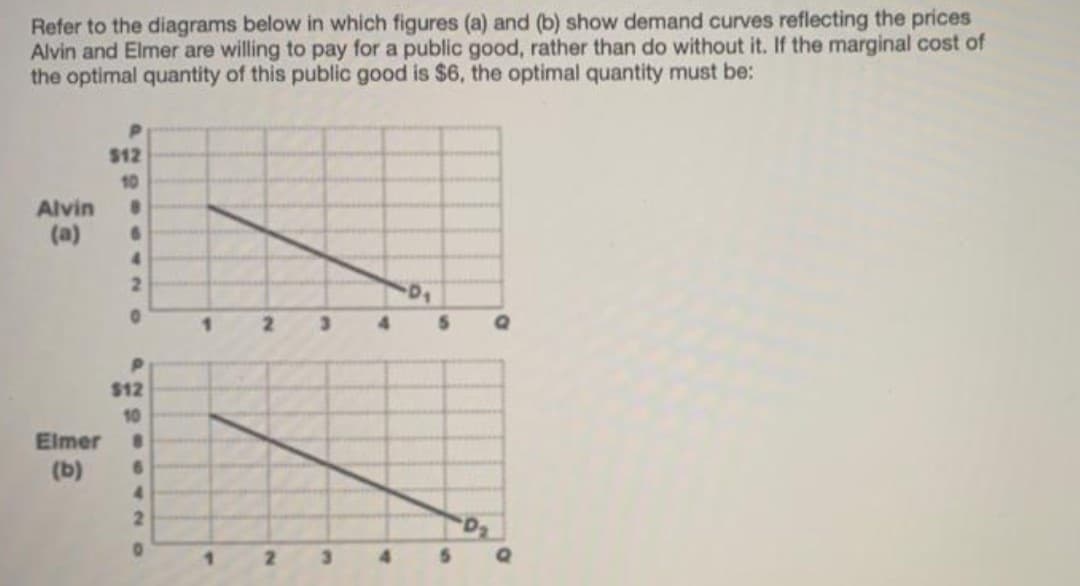Efficiency loss refers to: O the situation where the maximum willingness to pay for a product is less than minimum acceptable price. the situation where the maximum willingness to pay for a product is equal to the minimum acceptable price. the difference between consumer and producer surplus. the sum of consumer and producer surplus.
Efficiency loss refers to: O the situation where the maximum willingness to pay for a product is less than minimum acceptable price. the situation where the maximum willingness to pay for a product is equal to the minimum acceptable price. the difference between consumer and producer surplus. the sum of consumer and producer surplus.
Chapter16: Public Goods And Public Choice
Section: Chapter Questions
Problem 1.1P: (Optimal Provision of Public Goods) Using at least two individual consumers, show how the market...
Related questions
Question

Transcribed Image Text:Efficiency loss refers to:
the situation where the maximum willingness to pay for a product is less than minimum
acceptable price.
the situation where the maximum willingness to pay for a product is equal to the minimum
acceptable price.
the difference between consumer and producer surplus.
the sum of consumer and producer surplus.

Transcribed Image Text:Refer to the diagrams below in which figures (a) and (b) show demand curves reflecting the prices
Alvin and Elmer are willing to pay for a public good, rather than do without it. If the marginal cost of
the optimal quantity of this public good is $6, the optimal quantity must be:
$12
10
Alvin
(a)
4.
2.
4.
$12
10
Elmer
6.
4.
(b)
2.
Expert Solution
This question has been solved!
Explore an expertly crafted, step-by-step solution for a thorough understanding of key concepts.
This is a popular solution!
Trending now
This is a popular solution!
Step by step
Solved in 2 steps

Knowledge Booster
Learn more about
Need a deep-dive on the concept behind this application? Look no further. Learn more about this topic, economics and related others by exploring similar questions and additional content below.Recommended textbooks for you







Economics: Private and Public Choice (MindTap Cou…
Economics
ISBN:
9781305506725
Author:
James D. Gwartney, Richard L. Stroup, Russell S. Sobel, David A. Macpherson
Publisher:
Cengage Learning

Macroeconomics: Private and Public Choice (MindTa…
Economics
ISBN:
9781305506756
Author:
James D. Gwartney, Richard L. Stroup, Russell S. Sobel, David A. Macpherson
Publisher:
Cengage Learning

Microeconomics: Private and Public Choice (MindTa…
Economics
ISBN:
9781305506893
Author:
James D. Gwartney, Richard L. Stroup, Russell S. Sobel, David A. Macpherson
Publisher:
Cengage Learning